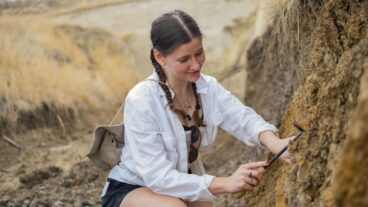Neve Tzedek, a vibrant neighborhood in the heart of Tel Aviv, has earned a reputation as a popular and trendy destination, attracting visitors and locals with its shops and cafés.
However, amidst the modern-day allure, the lively district of quaint little lanes remains deeply rooted in history.
Neve Tzedek pays homage to its roots through timeless establishments that stand as a testament to the neighborhood’s remarkable transformation and showcase a seamless blend of past and present.

In the late 19th century, a group of visionary pioneers sought to establish a community that would embody the spirit of rejuvenation. “Neve Tzedek,” which means “Oasis of Justice” in Hebrew, became the first Jewish neighborhood established outside of Jaffa, the ancient port city.

The early days of this neighborhood were all about simplicity and hard work. Modest homes with tiled roofs and narrow alleyways lined the streets.

But the neighborhood did fulfill its founders’ vision, becoming an oasis for writers, artists and intellectuals. Eventually it flourished into a cultural and artistic haven.
As time went on, Neve Tzedek fell into neglect as Tel Aviv’s focus shifted towards newer districts. Yet the old establishments continued standing tall amidst the changing tides, and today serve as anchors for a neighborhood that has enjoyed a remarkable renaissance in the past two decades.

Today, Neve Tzedek is a high-rent district with small-town charm and a Continental feel due to a large community of French immigrants alongside others who have made this neighborhood their home.

Join me as I explore five historical landmarks that encapsulate the essence and spirit of Neve Tzedek’s origin story.
The Nahum Gutman Museum
21 Shimon Rokach St.

The Nahum Gutman Museum is located in one of the first buildings in the Neve Tzedek neighborhood, the historic Writers’ Home, built in 1887 to house important thinkers and writers.
The child-friendly museum is named after the award-winning Israeli painter Nahum Gutman, whose artwork transports visitors to the early days of Neve Tzedek when it was founded in the late 19th century and portrays the neighborhood’s evolution.
Gutman was a well-loved illustrator of children’s stories, poems and articles. In the 1930s, he painted the floats and settings for the famous Tel Aviv Purim parade, “Adloyada.” In the 1960s, he created huge mosaic walls including one on the Shalom Meir Tower that tells the story of Tel Aviv, and in the 1970s he made the iconic mosaic fountain on Bialik Street decorated with images of historic events in Jaffa and Tel Aviv.
The Nahum Gutman Museum offers visitors the unique opportunity to connect with the neighborhood’s humble beginnings to better appreciate its remarkable transformation into a thriving oasis of culture and business.
Rokach House Museum
36 Shimon Rokach St.

Among the many architectural gems in Neve Tzedek, the Rokach House stands proudly, 120 years later, as a historical landmark, preserving the essence of the neighborhood’s early days.
Built in 1887 by Shimon Rokach, the leader of the pioneers who had the vision to build the first Jewish neighborhood outside of Jaffa, the house was restored and transformed into a museum that plays a crucial role in preserving the neighborhood’s history through its exhibitions, workshops and events.
Like a time capsule, each detail of the preserved rooms, antique furniture and artifacts describes the challenges and what life was like for the residents during Neve Tzedek’s formative years.
Eden Cinema
2-44 Lilienblum St.

While the Eden Cinema, one of the neighborhood’s historical landmarks, is permanently closed, its legacy as the first cinema in pre-state Israel speaks volumes about Neve Tzedek’s evolution and reputation as a center for artistic expression.
Built in 1914, the Eden Cinema served as a cultural landmark for the neighborhood and beyond. Not only did it showcase cinematic pieces, it held opera concerts, theater performances, elegant balls and town meetings. It was a place where audiences could immerse themselves in stories and come together as a community to appreciate the arts.
Although the cinema’s closure in 1974 may have marked an end of an era, the building itself is a symbol of the neighborhood’s commitment to creativity. A developer is planning to transform it into a luxury hotel.
Lilienblum Kiosk (Kiosk Est 1920)
3 Lilienblum St.
The historic Lilienblum Kiosk, the sole surviving kiosk in Tel Aviv from its era, has been transformed into the popular Kiosk Est 1920 deli café.
Kiosk Est 1920 has successfully preserved the original structure and ambiance of the kiosk, allowing visitors to step back in time and create a sense of nostalgia.
While the café celebrates Neve Tzedek’s historical roots, it also showcases various culinary trends, and the food is kosher and delicious! I highly recommend stopping by for an amazing culinary and historical experience.
Suzanne Dellal Center for Dance and Theater
5 Yehieli St.

A more modern-day landmark, the Suzanne Dellal Center for Dance and Theater established in 1989, reflects the true feel of Neve Tzedek.
The center has celebrated and showcased Israeli and international dance companies over the years and has become a cherished venue for dance performances, theater productions and cultural events. This influx of creativity and cultural exchange has served Neve Tzedek well in carrying on its artistic and creative legacy.
















